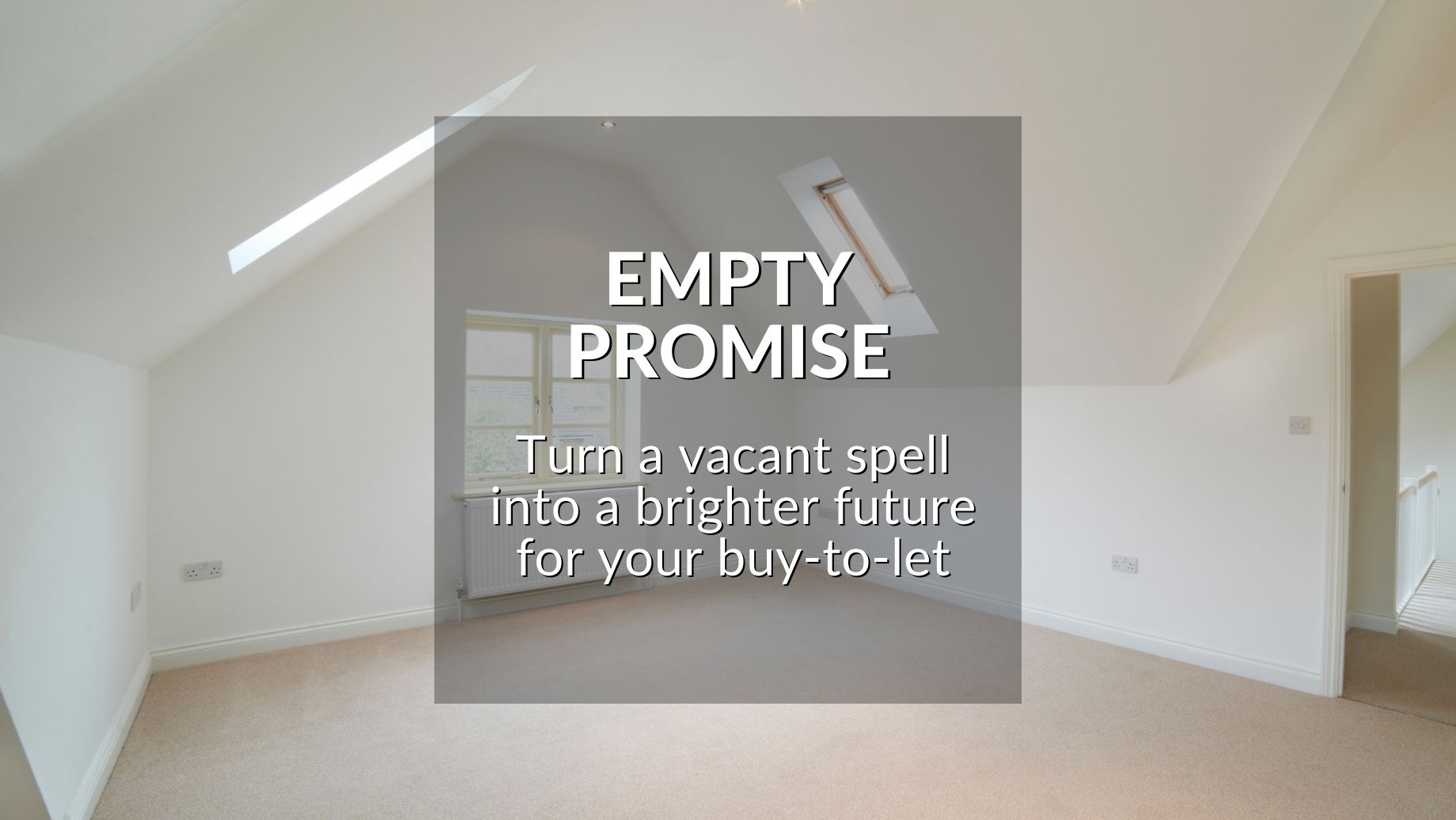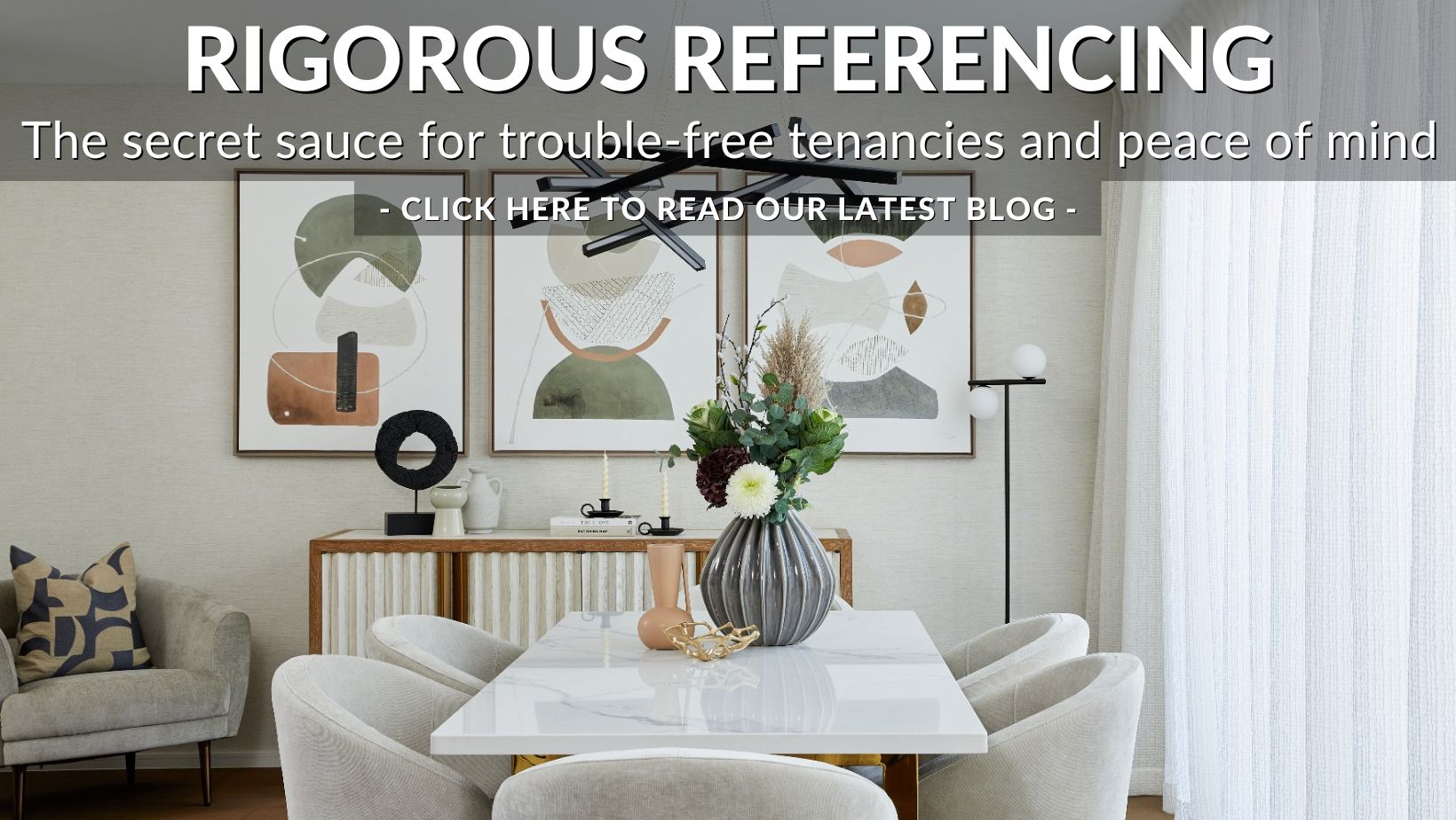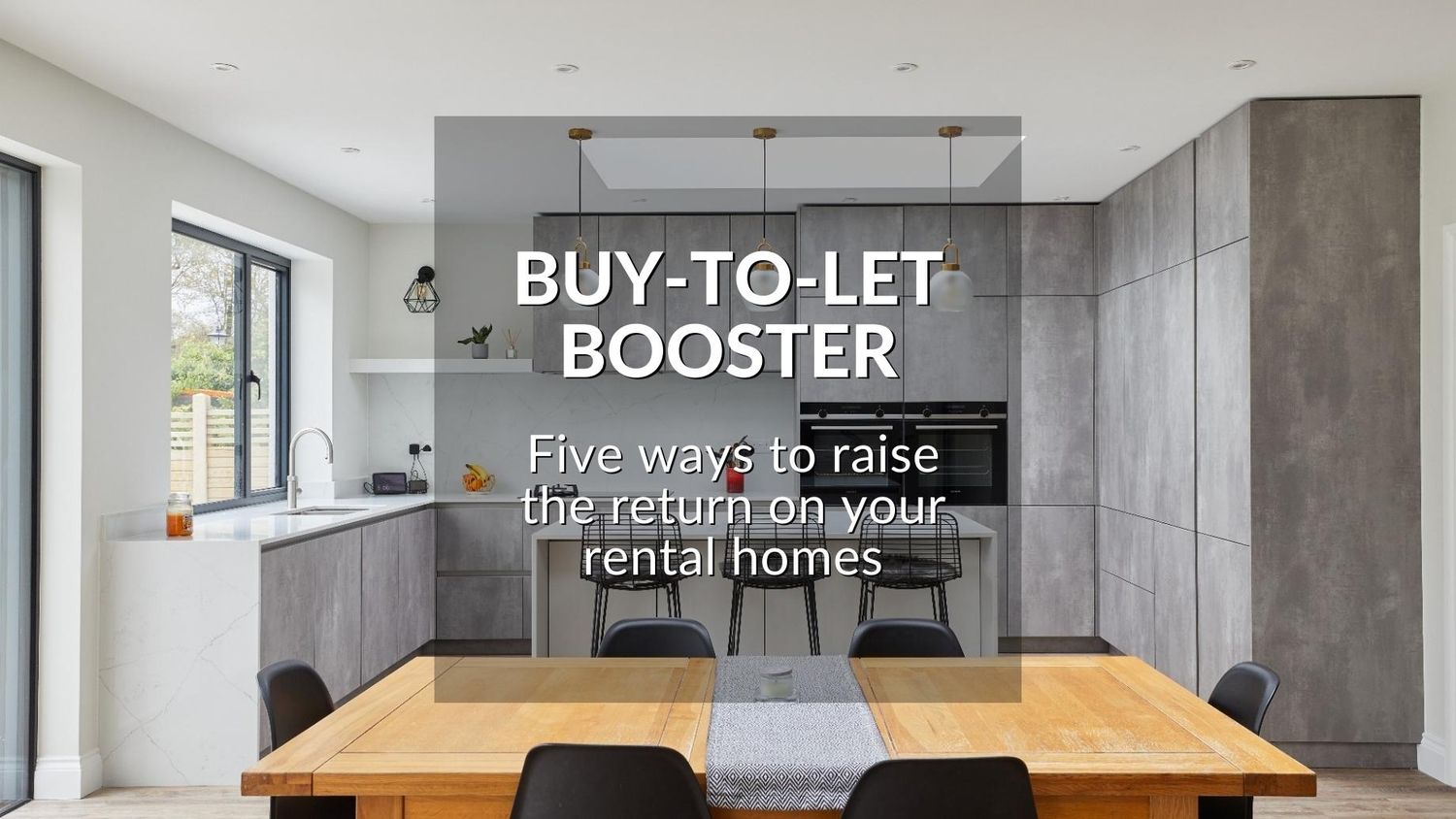Blog
- Details
- Hits: 1071
TURN A VACANT SPELL INTO A BRIGHTER FUTURE FOR YOUR BUY-TO-LET
An empty rental property doesn’t have to be a downer. In fact, having some time between tenancies gives you the chance to optimise your investment's rental yield, sales value, and future popularity.
That said, vacant homes do have some extra risks and management that you don't need to think about when your property has a tenant.
This means that an empty buy-to-let comes with both opportunity and organisation, plus a varied menu of things to consider, including:
- Spicing up the specification
- Rooting out repairs
- Presenting a fresh face
- Blitzing the admin
- Protecting your property
So whether you're making improvements to turn a greater profit, or just keeping things in check until the next tenancy begins, this week's blog is jam-packed with expert tips and tricks.
- Details
- Hits: 1670
THE SECRET SAUCE FOR TROUBLE-FREE TENANCIES AND PEACE OF MIND
Giving someone the keys to your rental property is a big deal, and you want to be as sure as you can be that whoever you choose turns out to be reliable, trustworthy, and trouble-free.
For complete peace of mind, a thorough background check will give you the confidence that your tenant:
- earns enough to live at your property.
- has a history of paying their rent on time.
- is financially stable and secure.
- will look after your investment.
- won’t be a nuisance to your neighbours.
Whenever we speak to a landlord where things have gone wrong with their tenant, the story often begins with a lack of pre-tenancy checks that could have flagged potential problems.
So for this week’s blog, join us behind the scenes of our rigorous referencing to see what we do and why only the best tenants pass the test.
- Details
- Hits: 888
THE SECRET SAUCE FOR TROUBLE-FREE TENANCIES AND PEACE OF MIND
Giving someone the keys to your rental property is a big deal, and you want to be as sure as you can be that whoever you choose turns out to be reliable, trustworthy, and trouble-free.
For complete peace of mind, a thorough background check will give you the confidence that your tenant:
- earns enough to live at your property.
- has a history of paying their rent on time.
- is financially stable and secure.
- will look after your investment.
- won’t be a nuisance to your neighbours.
Whenever we speak to a landlord where things have gone wrong with their tenant, the story often begins with a lack of pre-tenancy checks that could have flagged potential problems.
So for this week’s blog, join us behind the scenes of our rigorous referencing to see what we do and why only the best tenants pass the test.
- Details
- Hits: 958
FIVE WAYS TO RAISE THE RETURN ON YOUR RENTAL HOMES
Is your buy-to-let as profitable as it could be? Many aren’t.
There’s often more mileage in a rental home than many landlords realize and some of the checks you can make to determine whether your property is a peak performer include:
- Do your tenants usually leave after the initial contract term?
- Are other nearby homes achieving a higher rent than yours?
- Does your property reflect what local tenants are looking for?
Being a successful landlord is all about balancing capital growth, cash flow, and long-term planning. If you can optimize your investment now, it'll work even better in the future as rental values increase.
With that in mind, this week's blog is packed with tips for more profitable buy-to-lets, from cutting your costs to making improvements and even reviewing your business model.
So, whether you’re thinking of becoming a landlord, have a rental property that will soon be empty, or want to negotiate a higher rent with your tenants in return for upgrades, all you need is right here.
- Details
- Hits: 1054
HOW DO YOU PICK THE BEST OF THE BEST FOR YOUR RENTAL PROPERTY?
It sounds like a landlord’s dream come true: a shortage of rental homes, multiple tenants competing for each one, and rents going through the roof.
It’s the same story for almost every property to rent in Liverpool, but the flood of enquiries can be overwhelming. So how do you avoid getting bogged down in a sea of viewings and admin?
Well, it’s a mix of who you naturally attract in the first place and how you filter out the crowd, which means boosting your understanding of:
- Why there are so many tenants.
- The best way to target high earners.
- How to screen people before viewings.
- Typical warning signs of problem tenants.
- The secrets of rigorous referencing.
Daunted? Don’t be! In this week’s blog, we’ll show you how we sort the great from the good, so you can be sure the tenant you pick is truly the cream of the crop.








